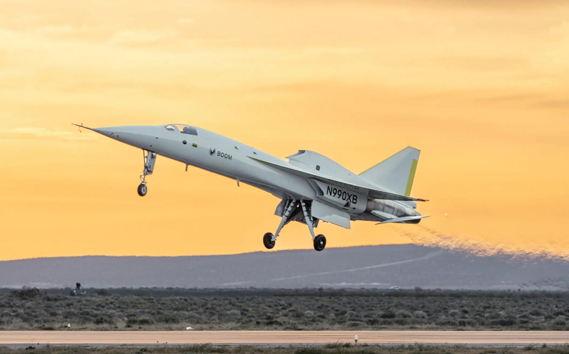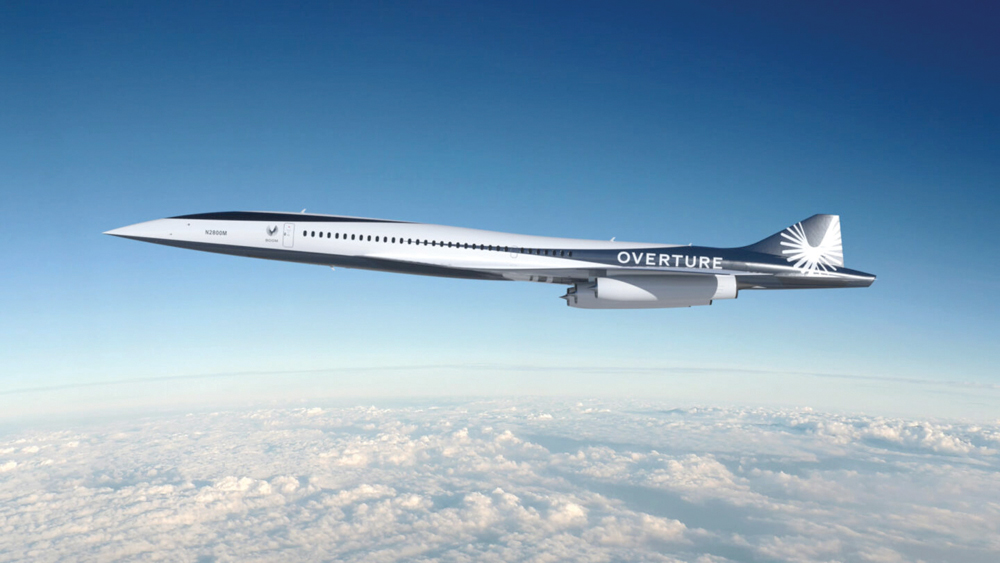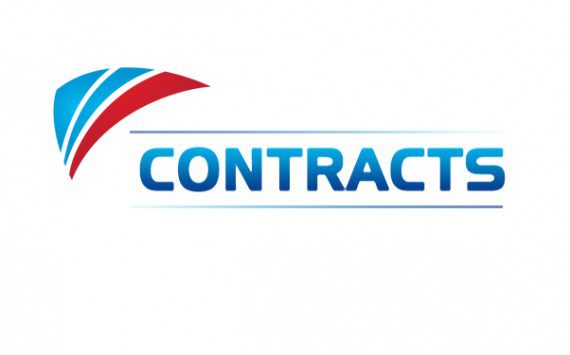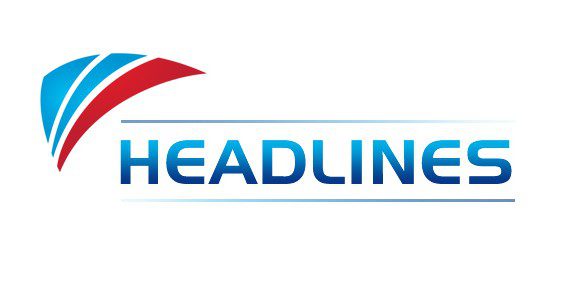Mojave Air and Space Port was the site of another “first flight” on March 22, 2024.
Boom Supersonic’s successful maiden flight announced XB-1, the world’s first independently developed supersonic jet.
The XB-1 has all the state-of-the-art technologies that will be incorporated in Boom’s supersonic airliner, Overture, according to a Boom press release. These features include carbon fiber composites to enable efficient supersonic flight, advanced avionics, digitally optimized aerodynamics, and an advanced supersonic propulsion system.
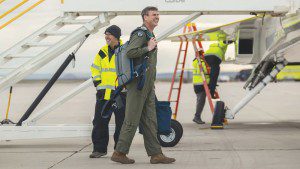 “Today, XB-1 took flight in the same hallowed airspace where the Bell X-1 first broke the sound barrier in 1947,” said Blake Scholl, founder and CEO of Boom Supersonic. “I’ve been looking forward to this flight since founding Boom in 2014, and it marks the most significant milestone yet on our path to bring supersonic travel to passengers worldwide.”
“Today, XB-1 took flight in the same hallowed airspace where the Bell X-1 first broke the sound barrier in 1947,” said Blake Scholl, founder and CEO of Boom Supersonic. “I’ve been looking forward to this flight since founding Boom in 2014, and it marks the most significant milestone yet on our path to bring supersonic travel to passengers worldwide.”
“Everyone on the XB-1 team should be incredibly proud of this achievement,” said Bill “Doc” Shoemaker, Chief Test Pilot for Boom Supersonic. “It has been a privilege to share this journey with so many dedicated and talented professionals. The experience we have gained in reaching this milestone will be invaluable to Boom’s revival of supersonic travel.”
For Doc, the road to XB-1 encompassed military service, a Stanford doctorate in aeronautics and astronautics, and the first flight of several prototype aircraft. He is a former U.S. naval aviator, and a graduate of the United States Naval Test Pilot School. Shoemaker has flown more than 5,000 flight hours in 50 aircraft types and has 900 carrier arrested landings.
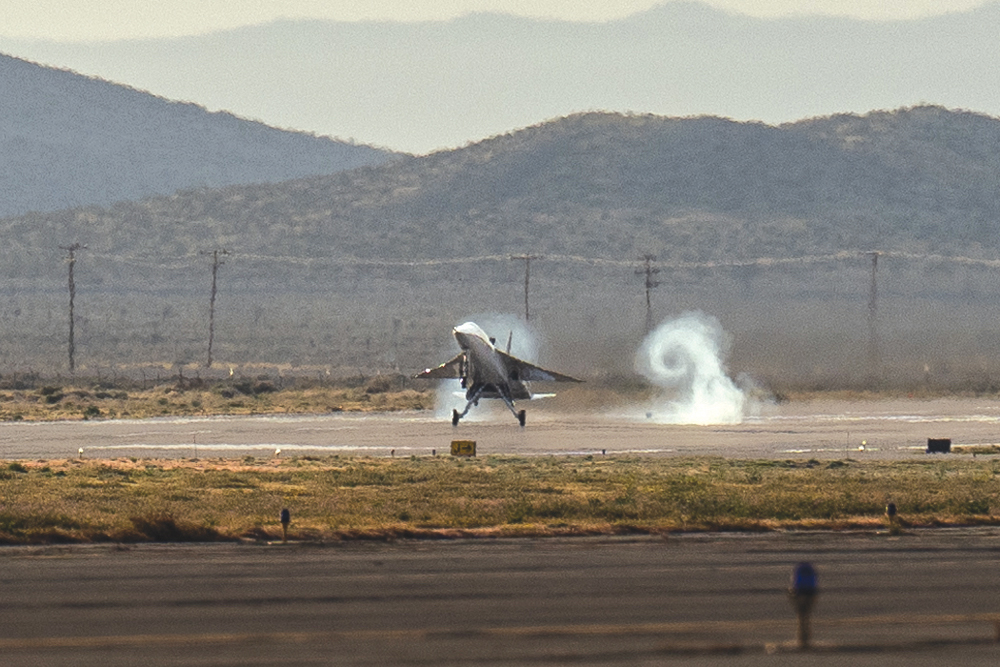
Taxi test completed last year
Boom Supersonic’s scaled down prototype, the XB-1, completed taxi tests on Runway 30 at Mojave on Aug. 23, 2023. Earlier in 2023, XB-1 was moved from the company’s hangar in Centennial, Colorado, to the Mojave Air and Space Port in Mojave, California, to continue preparations for flight.
The XB-1 is 71 feet in length and serves as a scaled-down prototype with the primary objective of validating pivotal technologies slated for employment in Boom Supersonic’s future supersonic airliner, the Overture, which will seat an estimated 65 to 80 passengers. The Overture plans to achieve remarkable speeds of up to Mach 1.7
In preparation for flight, Boom’s test pilots have completed hundreds of hours in the simulator for aircraft evaluation, operations development, training, and human factors assessments to achieve the highest levels of safety. The test pilots also maintain flight proficiency in a T-38 trainer aircraft, the same aircraft that was used as a chase plane for Friday’s flight. The test pilots also use the T-38 to practice formation flying.
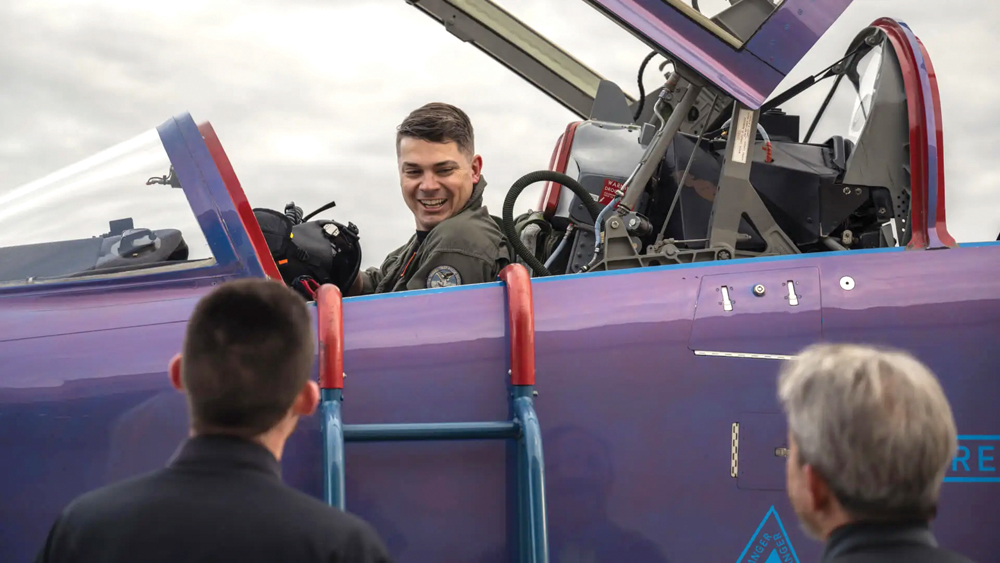
Chase aircraft and pilot
Test Pilot Tristan “Geppetto” Brandenburg flew the T-38 chase aircraft which monitored XB-1 in the air. Chase planes accompany new aircraft on their maiden flights to observe how the test plane is handling and verify things like altitude, airspeed, and airworthiness during flight.
“Being in the air with XB-1 during its maiden flight is a moment I will never forget,” said Brandenburg. “The team has been working hard to get to this point, and seeing today’s flight through mission completion is a huge accomplishment for all of us.”
“Geppetto” is a former U.S. Naval aviator and graduated from the United States Naval Test Pilot School.
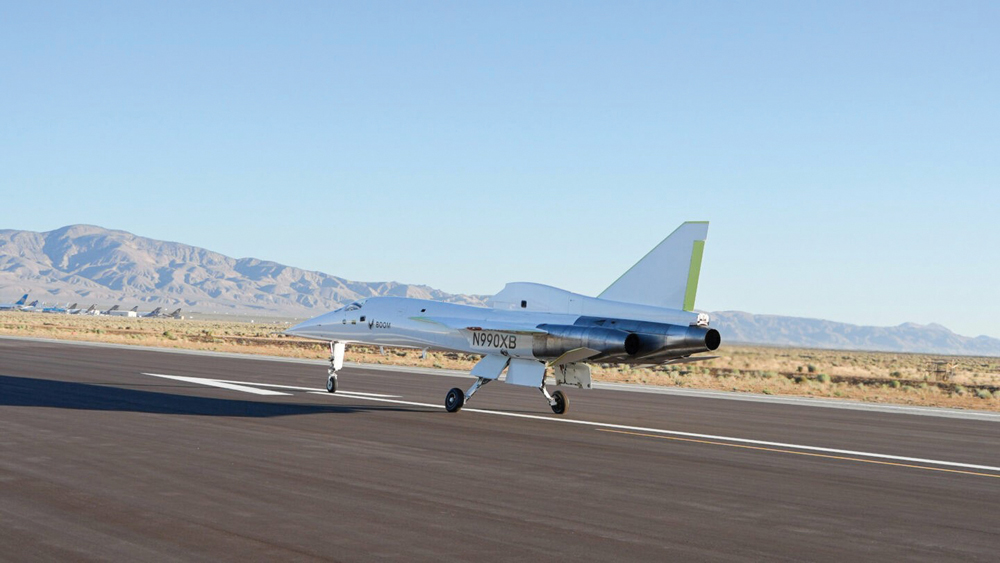
High angle of attack landing on Runway 30
The XB-1 met all its test objectives, including safely and successfully achieving an altitude of 7,120 feet and speeds up to 238 knots (273 mph), Boom Supersonic said in a press release. While XB-1 was in the air, the team performed an initial assessment of the aircraft’s handling qualities, including airspeed checks with the T-38 chase aircraft, and assessing the aircraft’s stability in the landing attitude (at a high angle of attack).
Looking forward to the return of supersonic air travel
The Concorde was retired on Oct. 24, 2003, more than 20 years ago. This historic first flight of Boom’s XB-1 points the way back to civil supersonic flight with Boom’s Overture airliner.






